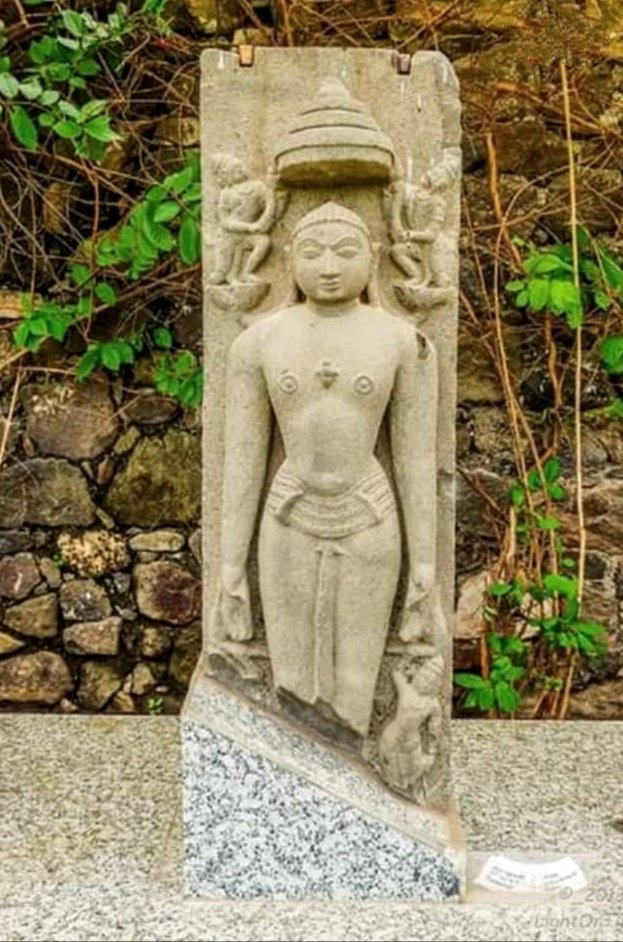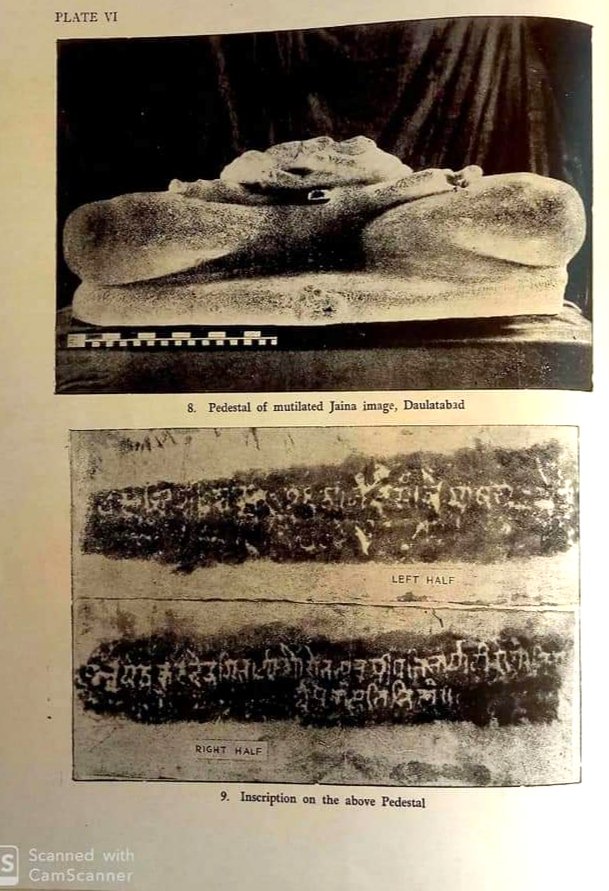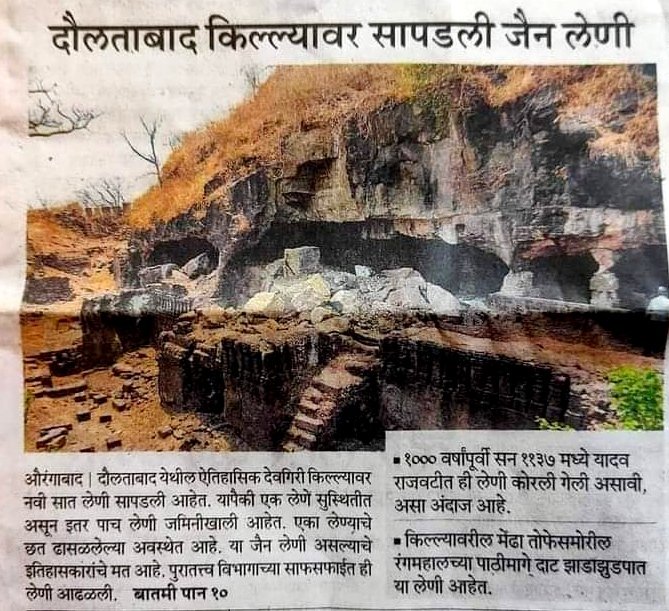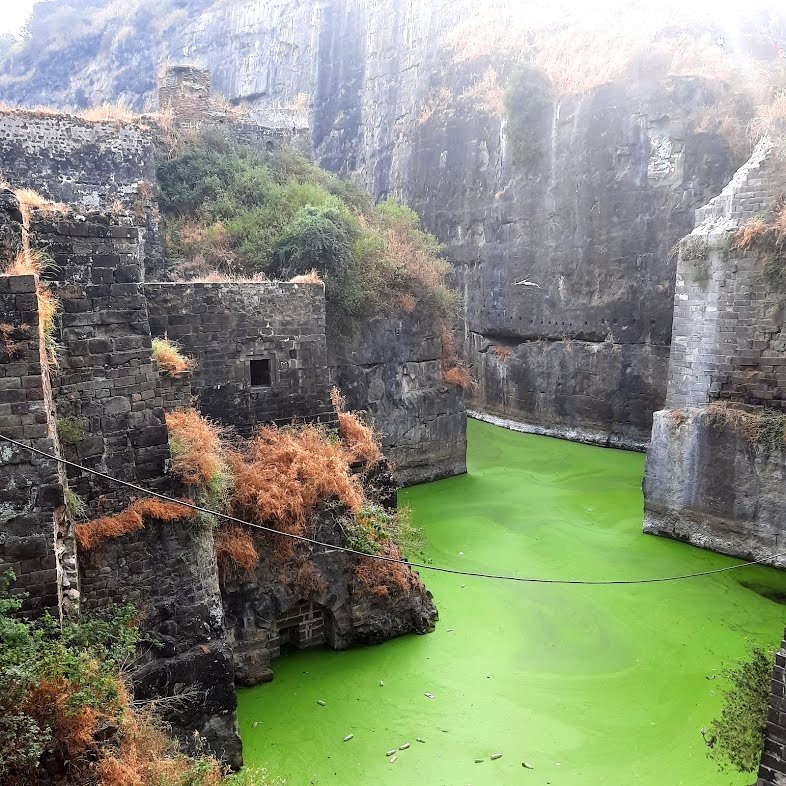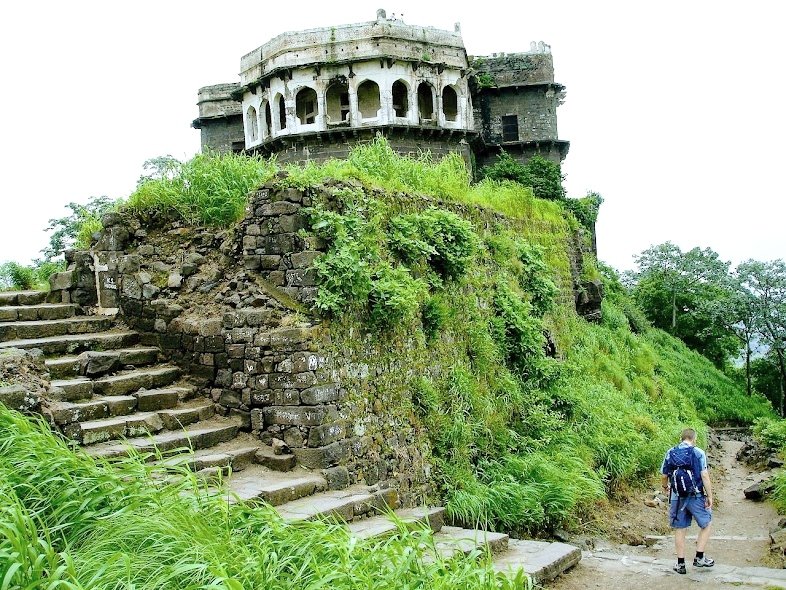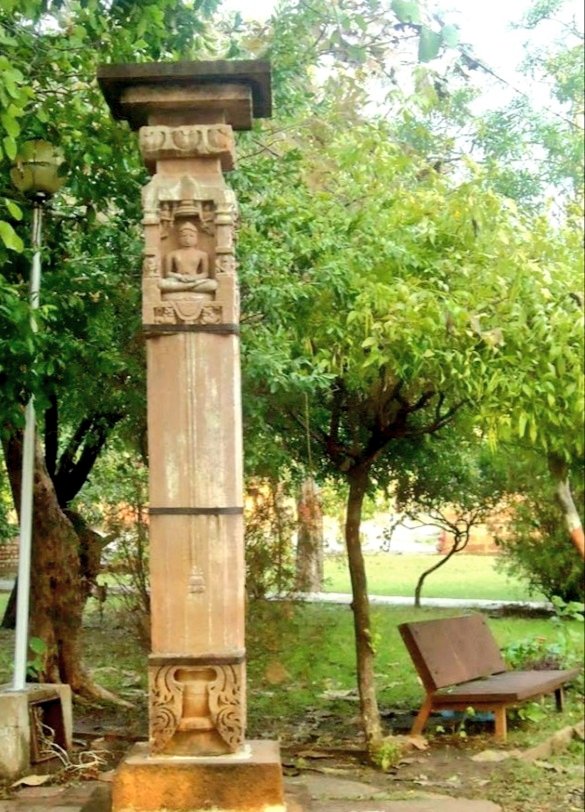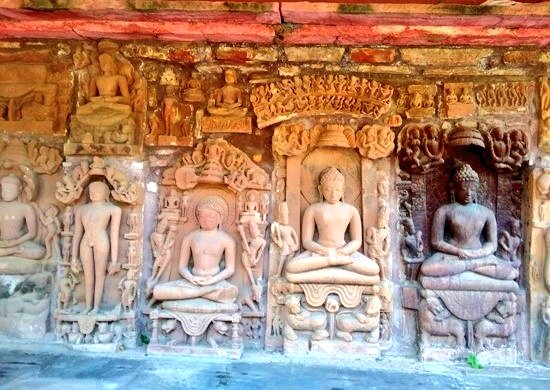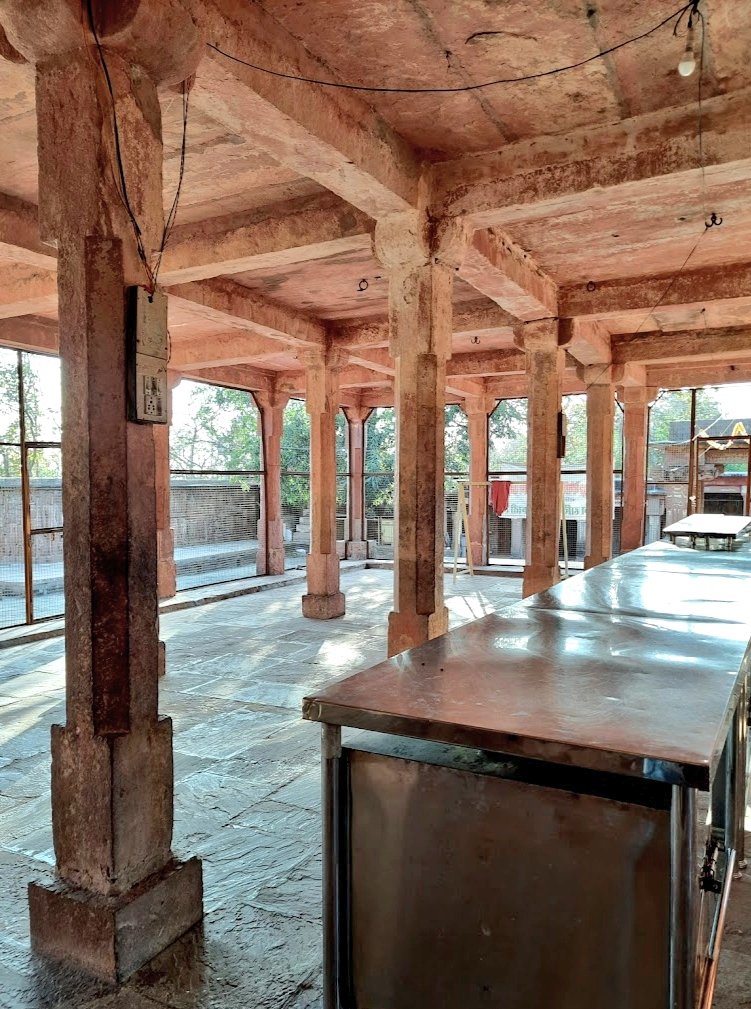
April 14 is celebrated as #MahavirJayanti. Rightly, it is #MahavirJanmaKalyanak - celebration of the birth of Mahavir swami by #Jains, who is the 24th & last Tirthankar of this Avsarpini. He was born in 599 BC on Chaitra Sud 13 at Kundalpur/Kundagram in today's #Bihar
#Thread
#Thread

In Jainism, Panch Kalyanaks are the 5 chief Auspicious events that occur in the life of a Tirthankar.
🔸 Garbha - Conception (when the soul enters the womb)
🔸Janma - Birth
🔸Diksha - Renunciation
🔸Kevalgyan - Omniscience
🔸Moksh - Salvation
(2)



🔸 Garbha - Conception (when the soul enters the womb)
🔸Janma - Birth
🔸Diksha - Renunciation
🔸Kevalgyan - Omniscience
🔸Moksh - Salvation
(2)




🔹His birthday is celebrated as 'Mahavir Janma Kalyanak' & his Nirvan day is observed as 'Deepavali' by Jains.
🔹He was born in 599BC at Kundalpur & attained Moksh in 527BC at Pawapuri, #Bihar.
🔹His chief disciple Gautam attained Kevalgyan the night that he attained Moksh.
(3)

🔹He was born in 599BC at Kundalpur & attained Moksh in 527BC at Pawapuri, #Bihar.
🔹His chief disciple Gautam attained Kevalgyan the night that he attained Moksh.
(3)


Mahavira was born as Vardhaman to King Siddhartha of Ikshvaku dynasty & Queen Trishala of Licchavi dynasty of Kundalpur in today's #Bihar. His siblings were Nandivardhana & Sudarshana. According to Acharanga Sutra, his parents were lay devotees of 23rd Tirthankar Parshvanath.
(4)
(4)

Jain texts describe Mahavir's 26 births before his birth as a tirthankar. It is interesting to know that he was born as Marichi, son of Bharat Chakravartin in a previous life. Marichi becomes the disciple of his grandfather Tirthankar Adinath, who later starts his own cult.
(5)



(5)
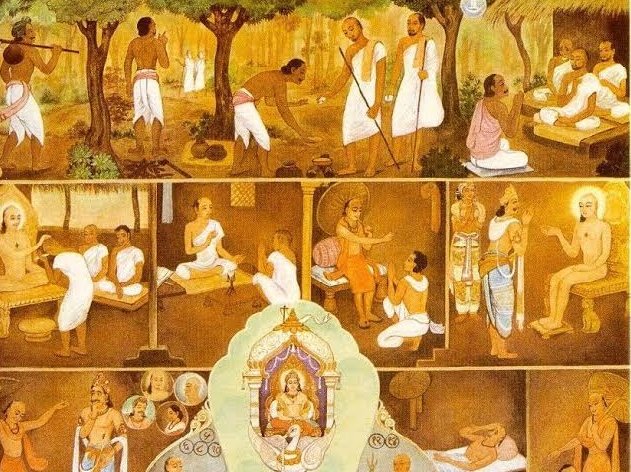



Mahavir swami married Yashoda at a young age & had a daughter named Priyadarshana, as written in Shwetambar scriptures. However, Digambar literature maintains that he refused the proposal to marry Yashoda. At the age of 30, he abandoned his royal life & took Diksha (monkhood)
(6)

(6)


Uttarapuran & Harivamśapurāņ mention that Mahavira achieved Kevalagyan under a Sāla tree on the bank of River Rijuvalika near Jrimbhikagrama at age of 43, after 12 years of rigorous penance. This river still exists in #Bihar. A Jal mandir is built at the place of his Nirvan.
(7)

(7)
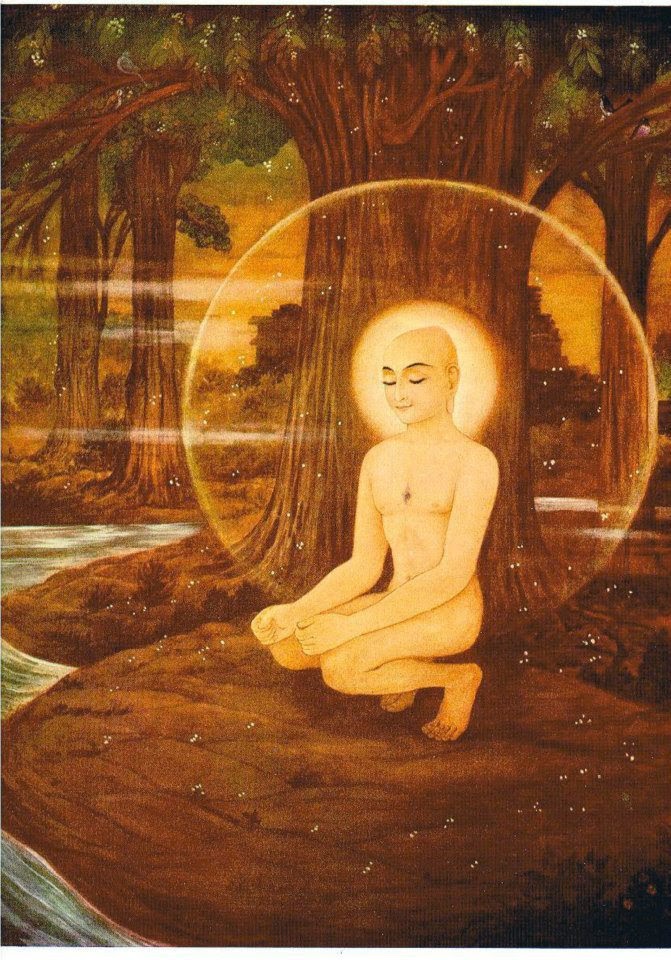

A Samavasaran is a divine preaching hall built by celestials after a tirthankar attains Kevalgyan. It is attended by all - Celestial beings, humans, animals. Mahavir swami's Jinvaani (preachings) was in Ardha-Magadhi but it was understood by all in their own language.
(8)
(8)

Mahavir swami said observance of 5 vows (mahavrat) is necessary for spiritual liberation -
👉🏼 Ahimsa (non-violence)
👉🏼 Satya (truth)
👉🏼 Asteya (non-stealing)
👉🏼 Brahmacharya (chastity)
👉🏼 Aparigraha (non-attachment)
Similarly, he prescribed 12 Anuvrata for Householders.
(9)
👉🏼 Ahimsa (non-violence)
👉🏼 Satya (truth)
👉🏼 Asteya (non-stealing)
👉🏼 Brahmacharya (chastity)
👉🏼 Aparigraha (non-attachment)
Similarly, he prescribed 12 Anuvrata for Householders.
(9)

He also taught the principle of Anekantavada: Syadvada & Nayavada
And the 3 guiding principles of #Jainism called Tri-Ratna (3 jewels) -
▫️Samyak Darshan
▫️Samyak Gyan
▫️Samyak Charitra
Often seen in Jain Iconography as a Tri-layered umbrella above the head of Tirthankar
(10)
And the 3 guiding principles of #Jainism called Tri-Ratna (3 jewels) -
▫️Samyak Darshan
▫️Samyak Gyan
▫️Samyak Charitra
Often seen in Jain Iconography as a Tri-layered umbrella above the head of Tirthankar
(10)

A Tirthankar is one who has conquered the saṃsāra - cycle of death & rebirth, establishes Dharma - a path for others to follow. He establishes a Chaturvidhi sangh of Ascetics & Laypeople - Shraman, Shramani, Shravak & Shravika.
We come under the sangh of Mahavir swami.
(11)
We come under the sangh of Mahavir swami.
(11)

According to Kalpa Sutra, Mahavir swami had 14,000 sadhus, 36,000 sadhvis, 159,000 sravakas and 318,000 sravikas.
Jain texts mention Raja Srenik (Bimbisara) & Raja Kunika (Ajatashatru) of Haryanka dynasty and Raja Chetaka of Videha as his royal followers/disciples.
(12)
Jain texts mention Raja Srenik (Bimbisara) & Raja Kunika (Ajatashatru) of Haryanka dynasty and Raja Chetaka of Videha as his royal followers/disciples.
(12)

Mahavira swami's primary disciples who were 11 Brahmins, a traditionally known as Ganadhars. Indrabhuti Gautama was his chief disciple & leader of the male monastic order. Aryika/Mahasati Chandana was the leader of the female monastic order.
(13)

(13)


Ganadhars are believed to have memorized & to have verbally transmitted Mahavira's teachings after his death. His teachings came to be known as Agamas or Gani-Pidaga, which were compiled by Ganadhar Gautam. Agamas are in 12 parts, the 12th Dristivaad is lost with time.
(14)

(14)


Did you know? There is a city called Burdwan/Bardhaman in #WestBengal. The origin of this name is ascribed to Vardhaman Swami or Mahavira who spent some time in Astikagrama, according to the Kalpasutra. This place was renamed as Vardhaman in his honour.
(15)
(15)

Jain Panchang is a Moon calendar based on Vir Nirvan Samvat, an era beginning on 7 October 527 BCE, commemorating the Nirvana of Mahavir swami, This is one of the oldest calender still in use. It is obtained by adding 470 years to the Kartikadi Vikram samvat calender.
(16)

(16)


Early #Jain & #Buddhist literature uses several names/epithets for Mahavir swami - Nayaputta, Nattaputta, Muni, Samana, Niggantha, Brahman, Bhagavan etc. He is known as Sramana in the Kalpa Sūtra. In early Buddhist suttas, he is referred to as Araha, Arhat, Veyavi.
(17)
(17)

A great soul like Mahavir swami should be celebrated not just by #Jains, but the whole world. He said every soul is equal & laid utmost emphasis to Karma. Answers to the minutest details of why, where, how...the ultimate truth can be found in his preachings. 🙏🏼
(18)
(18)

@threadreaderapp unroll
• • •
Missing some Tweet in this thread? You can try to
force a refresh




















